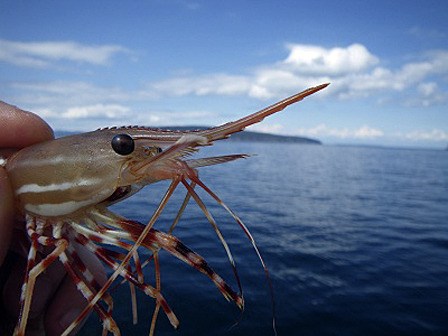The life of the prawn is a mystery to many, despite its popularity as a local seafood.
Did you know they are usually born male, reproduce for a few years, then become female and reproduce for a few more years before they die at the early age of five? Did you know that spot prawns are actually shrimp, not prawns, and that they are the largest of the seven shrimp species commercially harvested in the area?
Now is your chance to learn more about this fascinating and tasty local crustacean.
On Tuesday, Dec. 7 at 7 p.m., Rich Childers from the Department of Fish and Wildlife will speak on the life of the Spot Prawn during the next “Marine Science Lecture.”
The talk also will include information about how the state regulates spot prawn harvest. These shrimp are recreationally and commercially harvested in traps set from 55 to 90 meters (180 to 295 feet) deep, usually in areas where the seafloor is rocky. Be a good listener and you might even pick up a few tips to increase your own Spot Prawn harvest.
The 2010/11 Marine Science Lecture Series was created to inspire the general public and to highlight the amazing fish and wildlife of our region. Lectures are free. Park in the upper parking lot at Camp Orkila. Shuttle service from the parking lot to the talk is available before and after the lecture.
The lecture Series is presented by program partners The SeaDoc Society and YMCA Camp Orkila.



